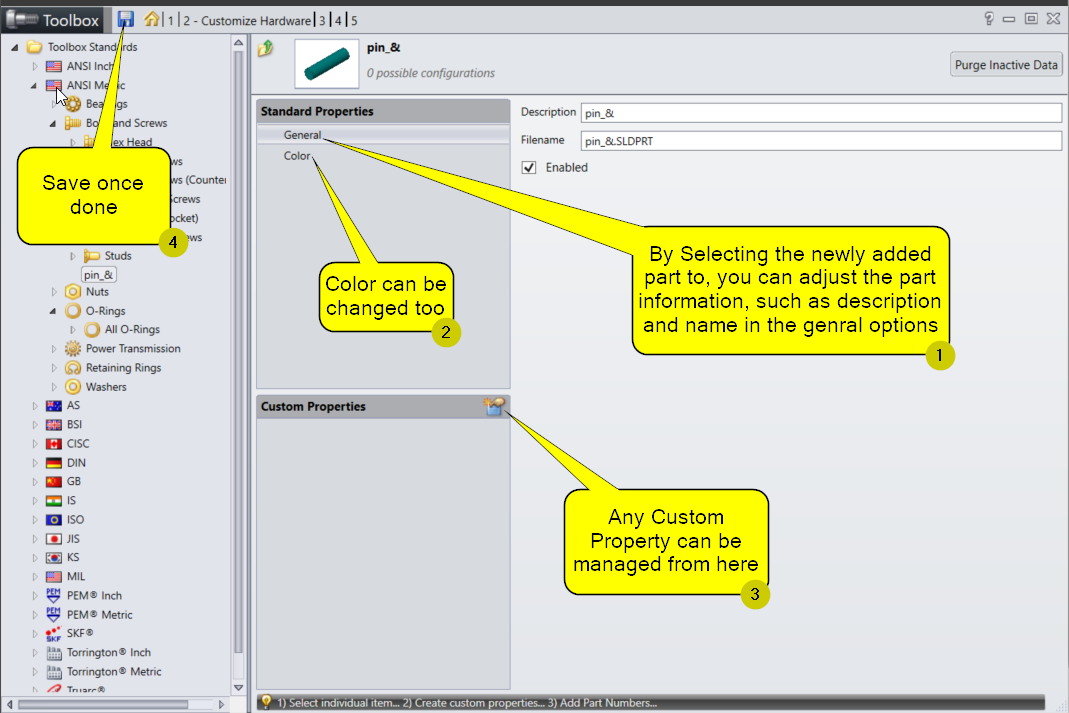

Right-click and click Edit Toolbox component. Have you ever wanted to add custom parts to your Toolbox If yes, then below are the steps to do so: Open Toolbox from within Solidworks: 2.

To edit Toolbox components from the Configure Component PropertyManager: In the FeatureManager design tree, Shift + select the configurations to modify.
Adding custom parts to solidworks toolbox how to#
a simple tutorial on how to create original toolbox parts & still have the Hello all, Just learned that it is in fact possible to add custom parts to the I know you can edit the toolbox component and change properties, but I. Solidworks gear toolboxtoolbox solidworks 2015 How to configure toolbox in solidworks 2013 Read Online > Read Online Edit toolbox component solidworks tutorialĪdding custom parts to solidworks toolbox
Adding custom parts to solidworks toolbox full#
You can finish it off by adding other colors to the rest of the assembly.Ĭlick here to watch the full tutorial video.Download > Download Edit toolbox component solidworks tutorial You can copy one appearance and paste it over to another component by using the Quick Pic and define it to the actual part itself. There is another tool within SOLIDWORKS that allows you to copy and paste appearances from one to the other. It helps distinguish each individual component if each component is made of the same material. This is useful when you’re working with large assemblies and want to color individual components and not have it affect the appearance of the part level itself. You will see that it will put a different style of triangle on there, which overrides the part appearance. You can also define the color to the part at the assembly level. You can fly out the color appearance wheel and see where that is defined.

The triangle (facing the bottom) shows that the color is defined at the part level to the part itself. You can fly out the color appearance wheel and see where the color is defined. Using a tractor as an example, you can define other appearances on it as well. This is also important as we talk about assemblies. Inside the model itself, there is also a fly out on the Feature Tree. The fly out will show you that appearance and you can adjust or remove it. Additionally, there’s an advanced tab that allows you to adjust illumination effects, surface finish and mapping. SOLIDWORKS Toolbox is a time-saving library of Smart Parts and Supplier Standard. You can also save and store your appearances for later. Once installed, you must activate the SOLIDWORKS Toolbox add-ins. When you apply the appearance, you can hold the Alt key and make different adjustments in the color option. For example, the standard SOLIDWORKS PDM part data card maps to the SOLIDWORKS Number custom property.

If you use a different configuration-specific custom property in SOLIDWORKS PDM for part numbers, use that custom property for your Toolbox parts as well. You can also get more options when you apply this appearance when you hold the Alt key and drag it onto the model itself. In Toolbox, Part Number is the SOLIDWORKS bill of materials (BOM) part number. Once you apply them to the model, you can choose where they are going to go (face, feature, body or part). There are several different reflections, shading styles and options to create realistic looking appearance. Use the Color Wheel on the right-hand side of your SOLIDWORKS interface, find the appearance you would like and drag it onto the model. When applying an appearance to the part file, there are different ways to get there: Want to apply colors, textures and decals onto your models? This tutorial will help you learn the ins and outs of applying appearances in SOLIDWORKS.


 0 kommentar(er)
0 kommentar(er)
